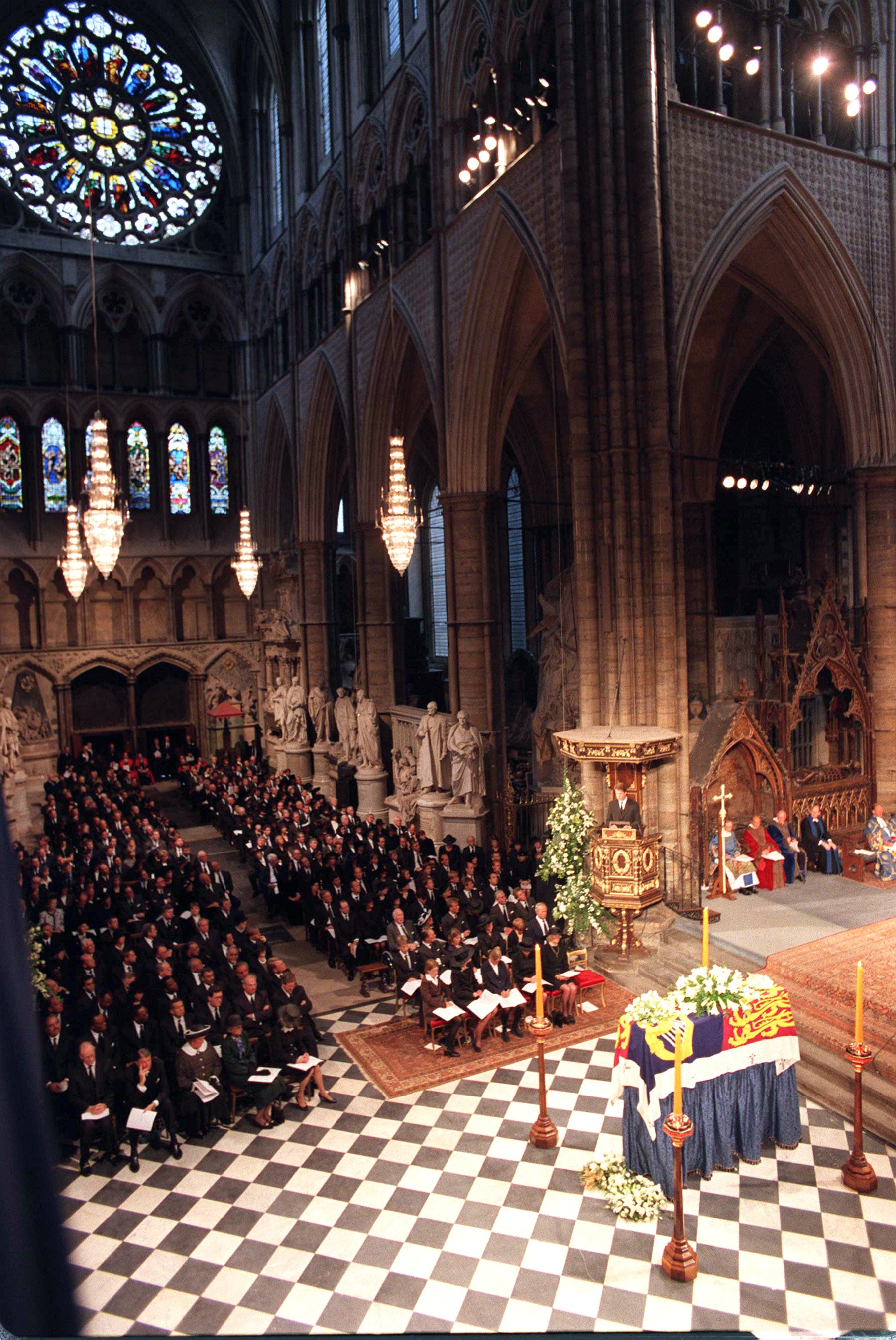The significance of Westminster Abbey, where the Queen’s funeral service is taking place
The monarch had close connections to the church – a focal point during times of national celebration and sadness
The Queen’s funeral service will take place at Westminster Abbey in London on Monday 19 September, in the same venue where she was married and crowned.
It will be the first time in over 260 years that a sovereign’s funeral will take place in the Abbey. The last was George II’s in 1760.
For the Queen, Westminster Abbey was where her most defining milestones took place, both in terms of her personal life and her public duty.
Princess Elizabeth was 21 when she married Prince Philip at the World Heritage Site, one of the most famous religious buldings in Britain.
More than 2,000 guests gathered inside, waiting for the royal bride, whose Norman Hartnell wedding dress was hand-embroidered with more than 10,000 pearls and crystals.
Just five years after she married, the princess became Queen Elizabeth II following the death of her father, George VI.
Some 16 months later, on 2 June 1953, she was crowned at the Abbey – the scene of coronations for English and later British monarchs since 1100.
During the service, the Queen took the oath and was anointed, with the St Edward’s Crown placed on her head. An estimated 27m people in Britain watched the ceremony on TV after the Queen agreed it could be televised.
The Abbey was also the site of romantic royal celebrations for the Queen’s family.
She saw her daughter, Princess Anne, marry Captain Mark Phillips in the church in 1973, and her second son, the Duke of York, wed Sarah Ferguson in 1986.
In 2011, Her Majesty’s grandson, the Duke of Cambridge, now the Prince of Wales, exchanged vows with Kate Middleton as millions watched across the globe.

On many instances during her life, the Queen went to the Abbey with her family to attend thanksgivings or commemorative events such as a service to mark the 60th anniversary of the Duke of Edinburgh’s Award scheme in 2016.
The church was also a reminder of the loss of her mother, Queen Elizabeth the Queen Mother, and former daughter-in-law, Diana, Princess of Wales.
The Queen Mother’s funeral was held at the Abbey in 2002, five years after Diana’s.
The Gothic church – whose official title is the Collegiate Church of St Peter, Westminster – has been the coronation church since 1066. The Queen’s was the 38th.
It is also the final resting place of 17 monarchs, including Charles II and Elizabeth I.
Steeped in over 1,000 years of history, the site was first visited by Benedictine monks in the middle of the 10th century.
The present church, started by Henry III in 1245, is one of the most important Gothic buildings in the country, with the medieval shrine of Anglo-Saxon saint Edward the Confessor still at its heart.
Elizabeth II maintained a close connection with the Abbey, which is a Royal Peculiar and subject only to the sovereign and not any archbishop or bishop.
Additional reporting by Press Association
Follow the latest updates as Queen Elizabeth II is laid to rest
Bookmark popover
Removed from bookmarks